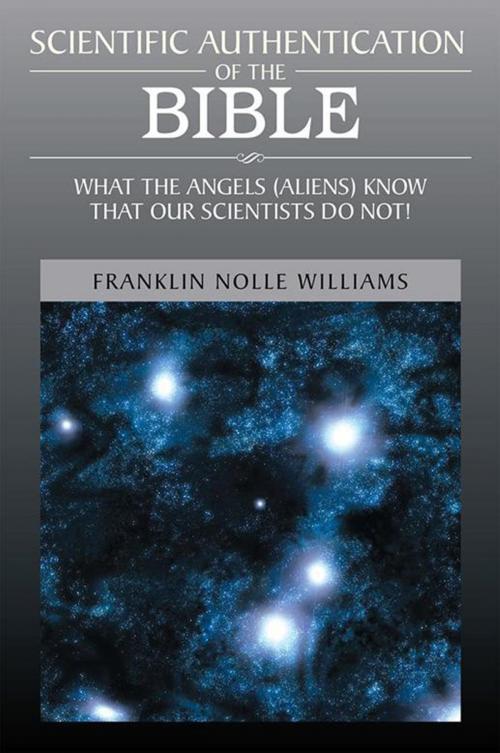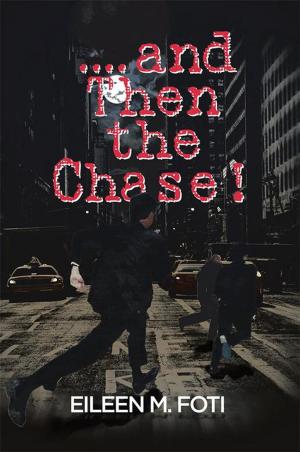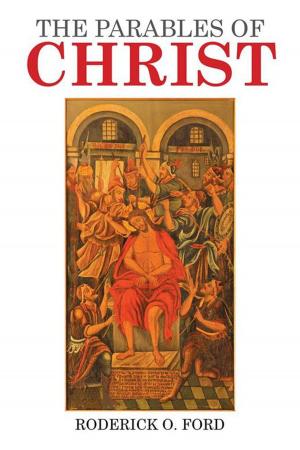Scientific Authentication of the Bible
What the Angels (Aliens) Know That Our Scientists Do Not!
Nonfiction, Religion & Spirituality| Author: | Franklin Nolle Williams | ISBN: | 9781483675589 |
| Publisher: | Xlibris US | Publication: | August 30, 2013 |
| Imprint: | Xlibris US | Language: | English |
| Author: | Franklin Nolle Williams |
| ISBN: | 9781483675589 |
| Publisher: | Xlibris US |
| Publication: | August 30, 2013 |
| Imprint: | Xlibris US |
| Language: | English |
In August of 1994 a paper was published in the scholarly Statistical Science, a journal of the Institute of Mathematical Statistics, entitled Equidistant Letter Sequences in the Book of Genesis. The paper was written by three internationally respected Hebrew Scholars and mathematicians, Doron Witztum, Eliyahu Rips, and Yoav Rosenberg. Their assertion is that there is a hidden, underlying text in the Torah, the first five books of the Bible. The following is an excerpt from their abstract of the paper which can be found in the appendix of Michael Drosnins book, The Bible Codes; It has been noted that when the Book of Genesis is written as two-dimensional arrays, equidistant letter sequences spelling words with related meanings often appear in close proximity. Quantitative tools for measuring this phenomenon are developed. Randomization analysis shows that the effect is significant at the level of 0.00002. The arrays are rows with an equal number of letters with all the punctuation and spaces removed. The sequences they are referring to are words like hammer and anvil, table and chair, rain and umbrella. These words go together and are usually found close to one another in the arrays. The tools they are referring to are the tools of mathematics involved. The randomization analysis is two one-hundred thousandths. In other words, it could only be two in one-hundred thousand chances that this occurred by the accidental random sequences of letters in this text. Most scientific experiments only require one in a hundred, 1/100 or .01, as being within validity. It was the occasion of the Bible Codes that it occurred to me that if there was an underlying code, then it would be ludicrous for the surface text to be invalid. Scribes had been specially trained to write the surface text verbatim, without one jot or tittle changed. If there was one mistake they were made to rewrite the whole page again. It was written contiguous, without punctuation or spacing between words. It was considered heretical if anything was changed. Because of this I began to study the surface text very carefully to find any hidden meanings that may have been there.
In August of 1994 a paper was published in the scholarly Statistical Science, a journal of the Institute of Mathematical Statistics, entitled Equidistant Letter Sequences in the Book of Genesis. The paper was written by three internationally respected Hebrew Scholars and mathematicians, Doron Witztum, Eliyahu Rips, and Yoav Rosenberg. Their assertion is that there is a hidden, underlying text in the Torah, the first five books of the Bible. The following is an excerpt from their abstract of the paper which can be found in the appendix of Michael Drosnins book, The Bible Codes; It has been noted that when the Book of Genesis is written as two-dimensional arrays, equidistant letter sequences spelling words with related meanings often appear in close proximity. Quantitative tools for measuring this phenomenon are developed. Randomization analysis shows that the effect is significant at the level of 0.00002. The arrays are rows with an equal number of letters with all the punctuation and spaces removed. The sequences they are referring to are words like hammer and anvil, table and chair, rain and umbrella. These words go together and are usually found close to one another in the arrays. The tools they are referring to are the tools of mathematics involved. The randomization analysis is two one-hundred thousandths. In other words, it could only be two in one-hundred thousand chances that this occurred by the accidental random sequences of letters in this text. Most scientific experiments only require one in a hundred, 1/100 or .01, as being within validity. It was the occasion of the Bible Codes that it occurred to me that if there was an underlying code, then it would be ludicrous for the surface text to be invalid. Scribes had been specially trained to write the surface text verbatim, without one jot or tittle changed. If there was one mistake they were made to rewrite the whole page again. It was written contiguous, without punctuation or spacing between words. It was considered heretical if anything was changed. Because of this I began to study the surface text very carefully to find any hidden meanings that may have been there.















